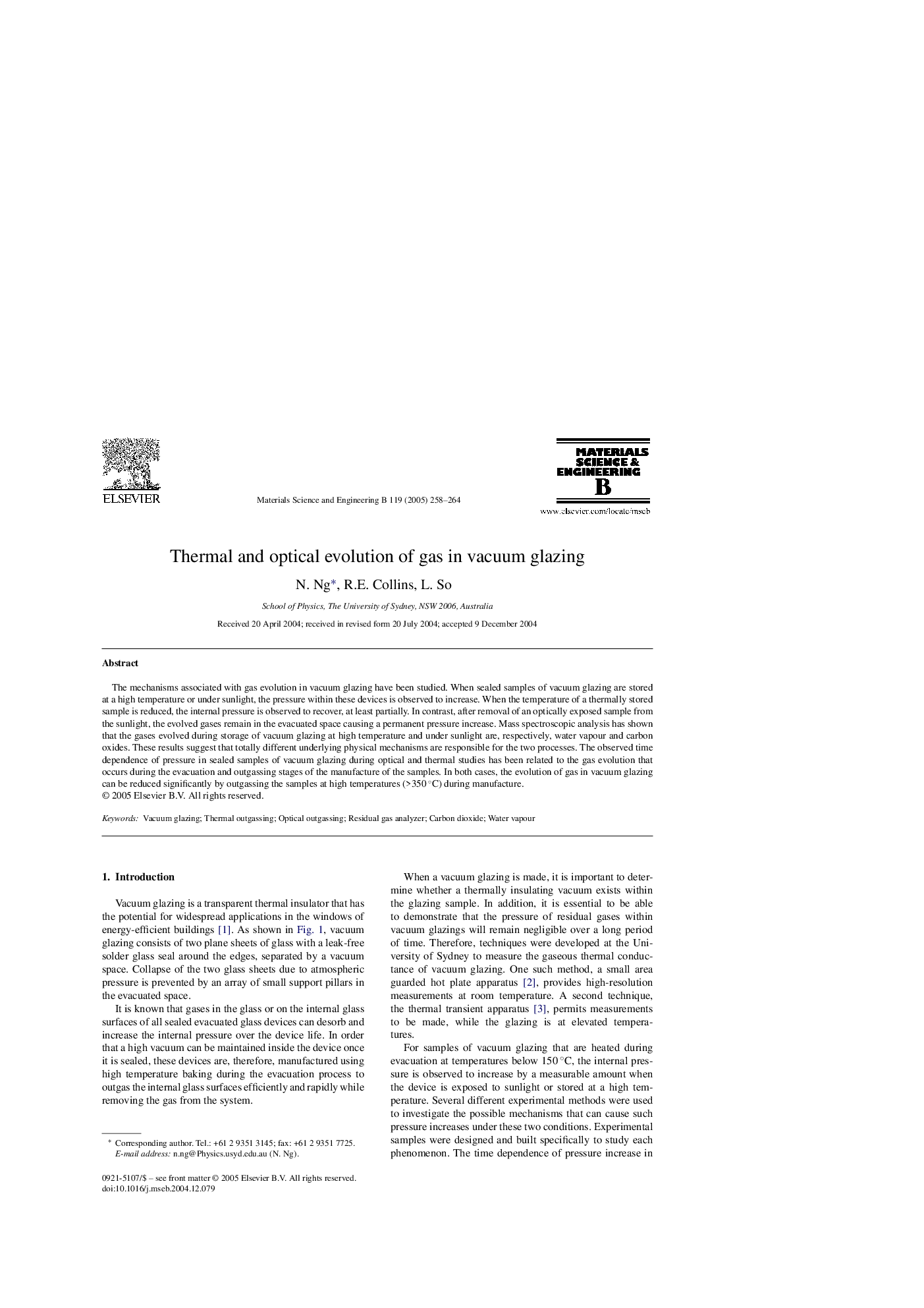| Article ID | Journal | Published Year | Pages | File Type |
|---|---|---|---|---|
| 10640078 | Materials Science and Engineering: B | 2005 | 7 Pages |
Abstract
The mechanisms associated with gas evolution in vacuum glazing have been studied. When sealed samples of vacuum glazing are stored at a high temperature or under sunlight, the pressure within these devices is observed to increase. When the temperature of a thermally stored sample is reduced, the internal pressure is observed to recover, at least partially. In contrast, after removal of an optically exposed sample from the sunlight, the evolved gases remain in the evacuated space causing a permanent pressure increase. Mass spectroscopic analysis has shown that the gases evolved during storage of vacuum glazing at high temperature and under sunlight are, respectively, water vapour and carbon oxides. These results suggest that totally different underlying physical mechanisms are responsible for the two processes. The observed time dependence of pressure in sealed samples of vacuum glazing during optical and thermal studies has been related to the gas evolution that occurs during the evacuation and outgassing stages of the manufacture of the samples. In both cases, the evolution of gas in vacuum glazing can be reduced significantly by outgassing the samples at high temperatures (>350 °C) during manufacture.
Related Topics
Physical Sciences and Engineering
Materials Science
Electronic, Optical and Magnetic Materials
Authors
N. Ng, R.E. Collins, L. So,
